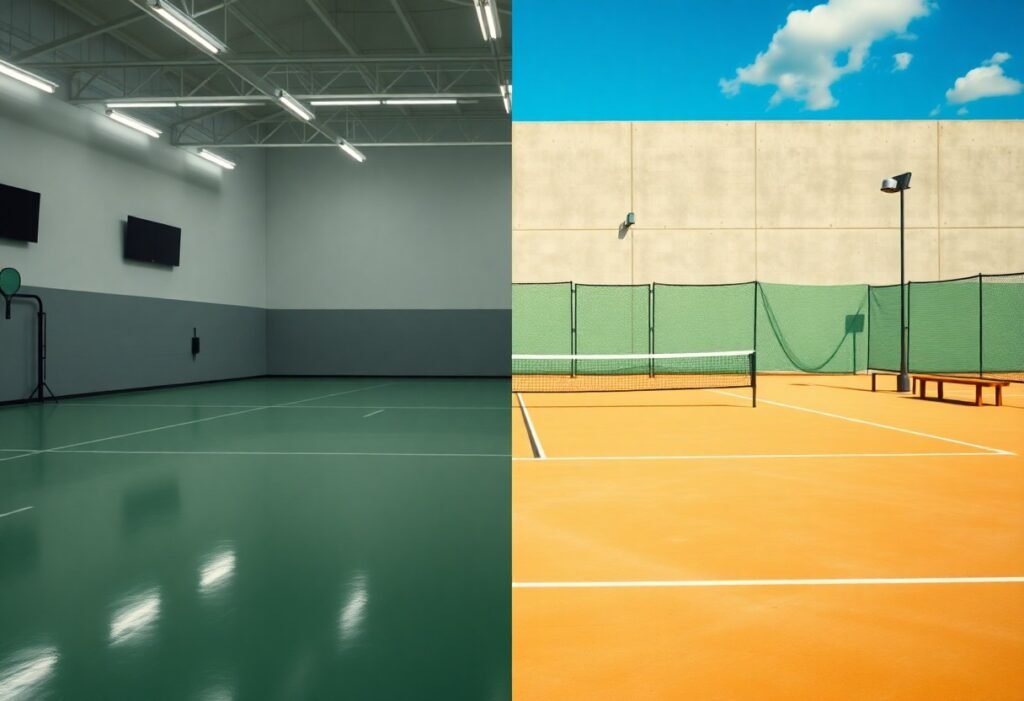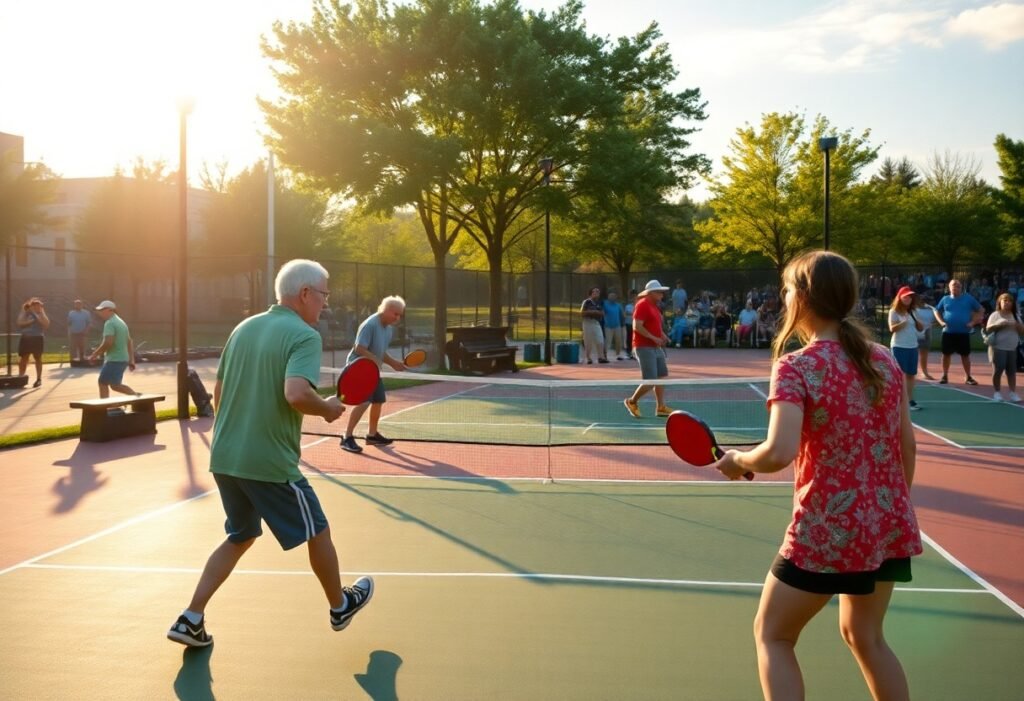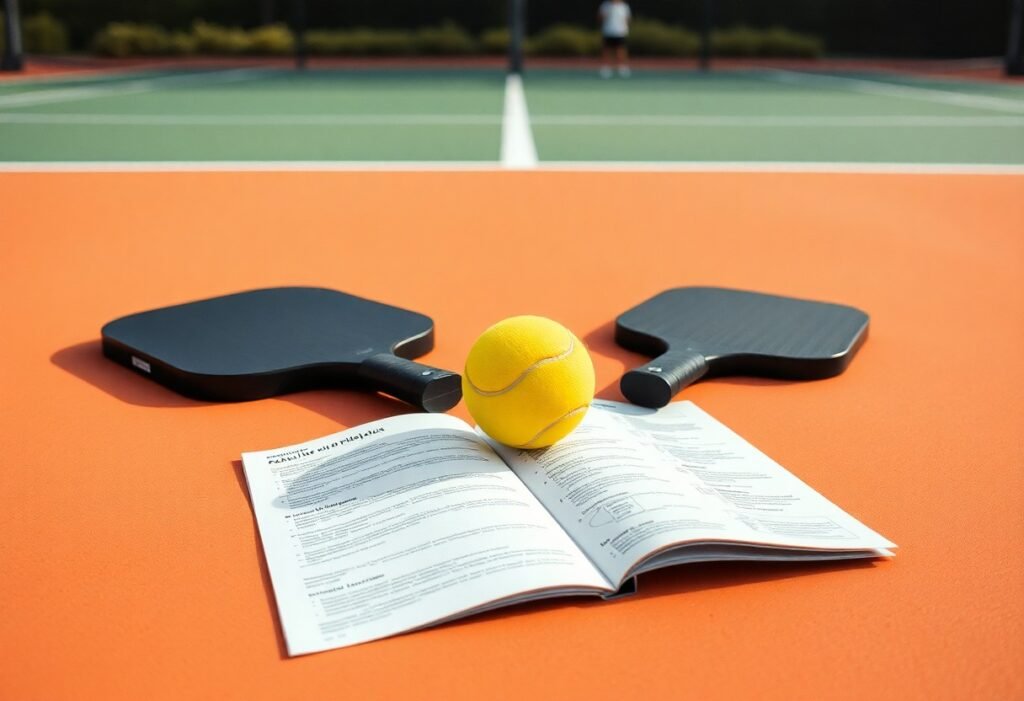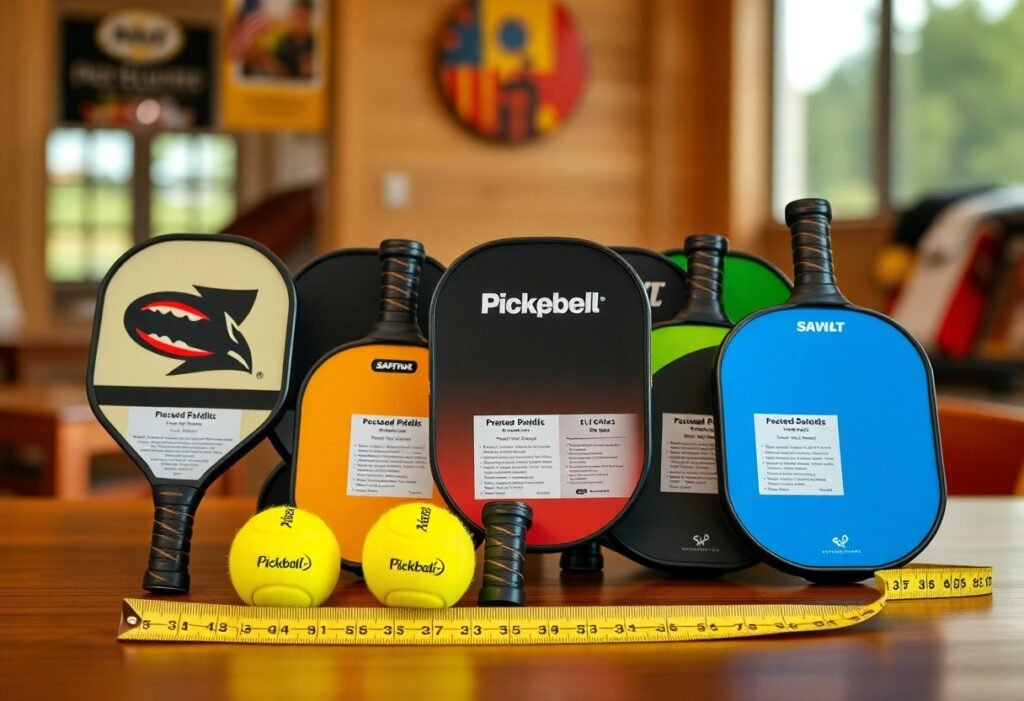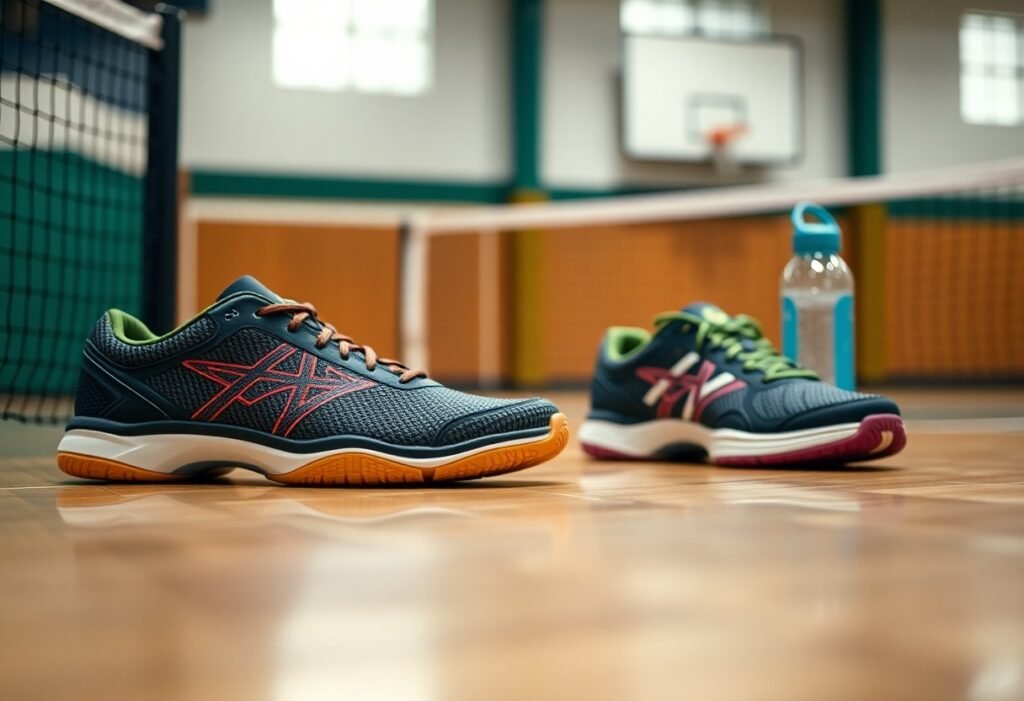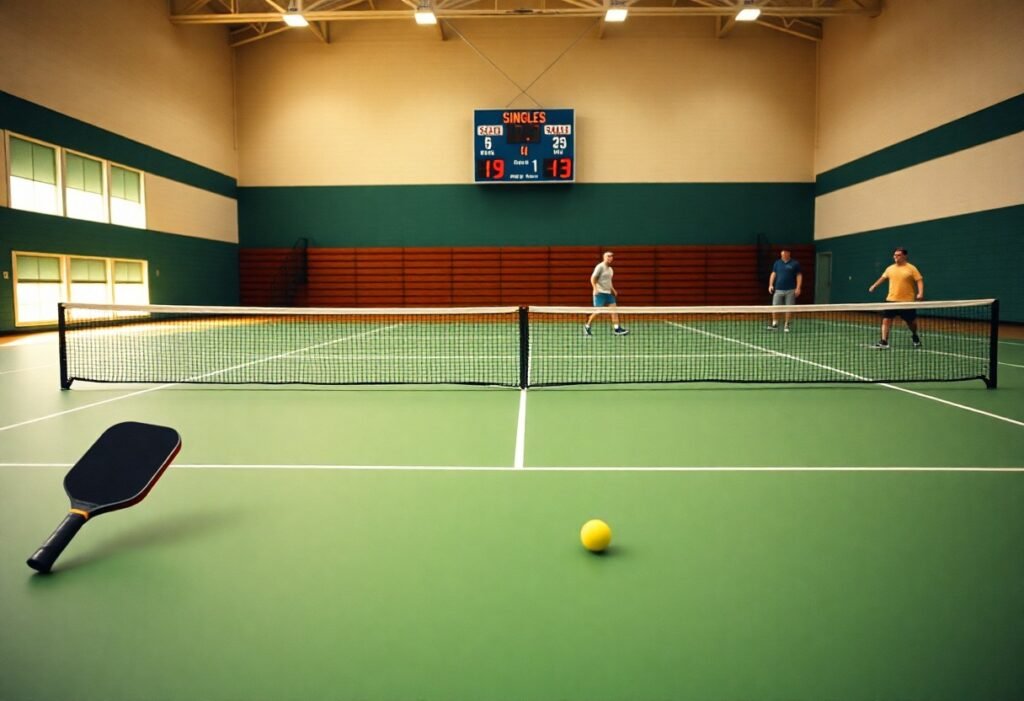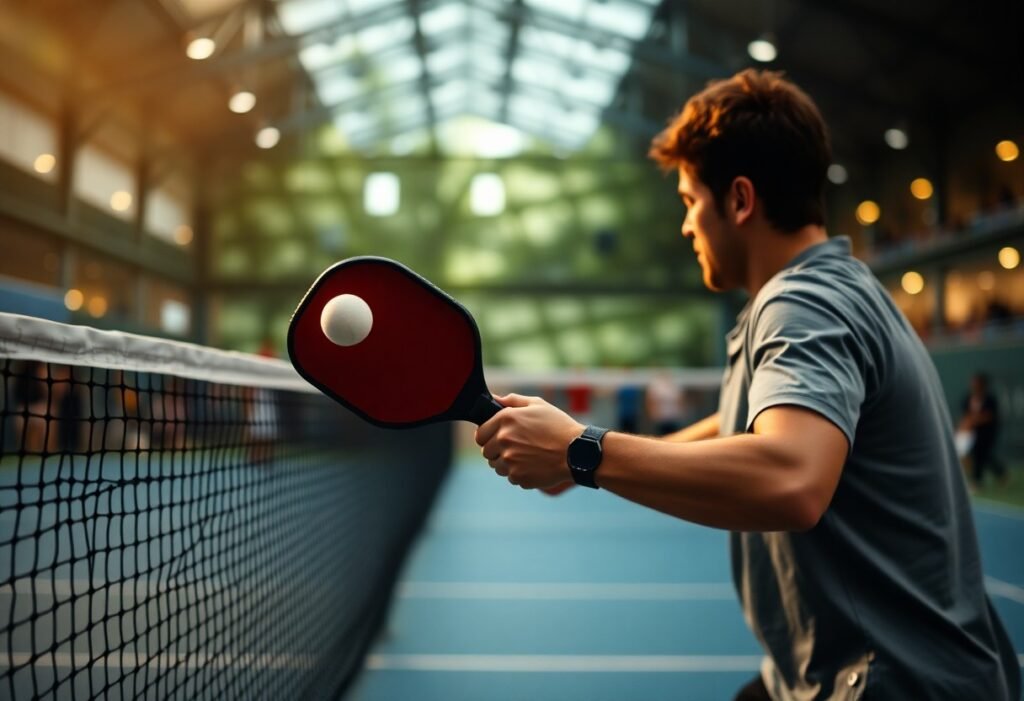Outdoor play offers distinct challenges compared to indoor pickleball, impacting your experience and performance. You’ll find that court surfaces differ significantly; outdoor courts often have textured surfaces that affect ball bounce. Weather conditions can also impact gameplay, presenting risks like sun exposure or rain that can hinder your matches. Conversely, indoor environments allow for more consistent temperature control and lighting, enhancing your focus. Understanding these key differences will help you decide which setting best suits your style and preferences.
Key Takeaways:
- Indoor pickleball is typically played on smaller courts with different surface materials, affecting ball bounce and speed.
- Outdoor pickleball involves more environmental factors such as wind and sun, influencing gameplay strategy.
- Equipment preferences may vary; indoor players often use softer paddles while outdoor players may opt for more durable options to withstand weather conditions.
Overview of Pickleball
History of Pickleball
Pickleball was invented in 1965 on Bainbridge Island, Washington, as a family pastime. Founders Joel Pritchard, Bill Bell, and Barney McCallum created the game using spare parts from other sports, evolving it into a unique racquet sport. The name “pickleball” supposedly comes from the Pritchard family dog, Pickles, who would chase after the ball during games.
Popularity and Growth
In recent years, pickleball has soared in popularity, especially among adults aged 50 and older. According to the Sports & Fitness Industry Association, pickleball participation increased by over 21% from 2019 to 2020, with about 3.3 million players in the U.S. alone. This growth is mirrored in the establishment of over 8,000 dedicated courts nationwide.
The appeal of pickleball lies in its accessibility and social nature. You can play for fun or compete at various skill levels, making it inviting for players of all ages. Local community centers, retirement communities, and parks have recognized the demand, reflecting this increase with the construction of new courts. Moreover, the combination of tennis, badminton, and ping pong elements creates a unique experience, attracting diverse groups and fostering friendships within the sport.
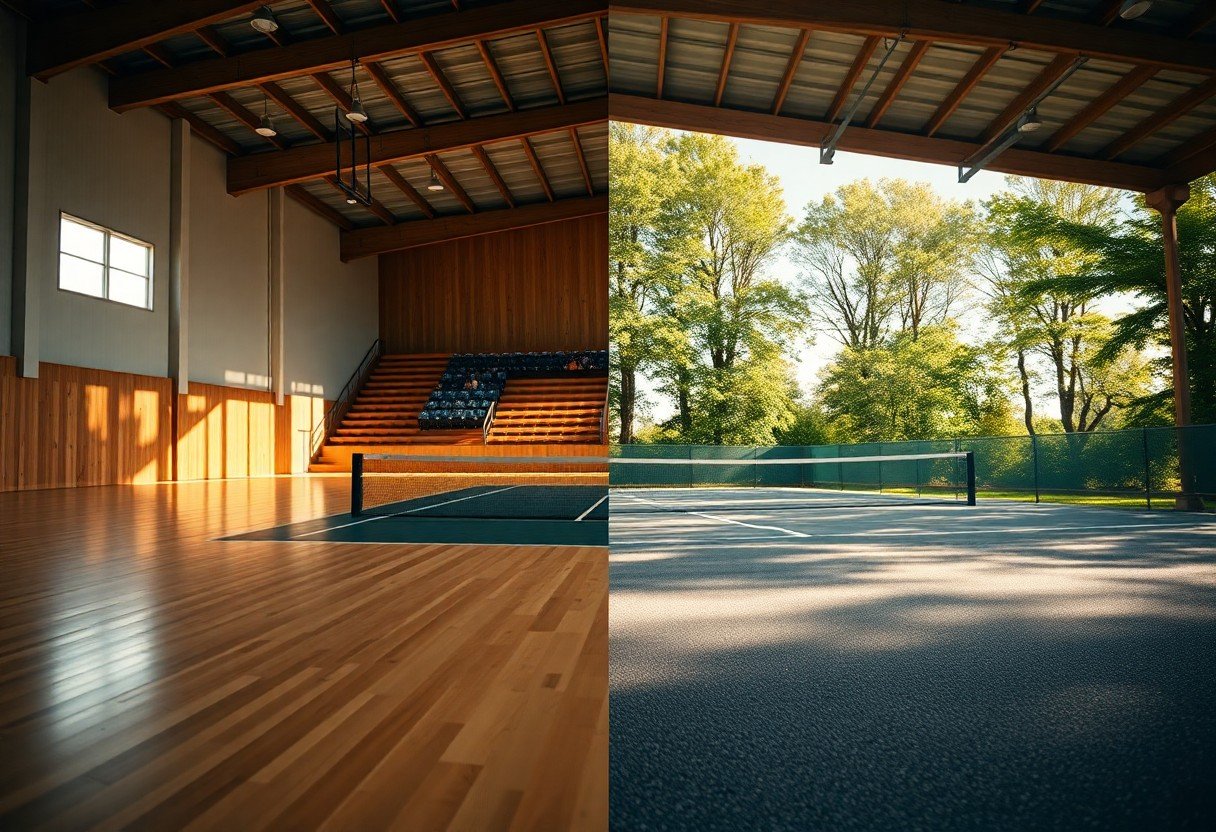
Indoor Pickleball
Court Dimensions and Surface
The standard indoor pickleball court dimensions are 20 feet wide and 44 feet long for doubles play, mirroring the outdoor court size. Indoor courts typically feature a smooth, high-quality hardwood or synthetic surface designed for better ball bounce and traction.
Equipment Considerations
Indoor pickleball often requires different equipment compared to outdoor play. You may want to select paddles made of softer materials to reduce noise, and choose balls specifically designed for indoor use, which usually have smaller holes and are lighter.
Indoor balls, like the popular Jugs Indoor Pickleball, are crafted to minimize bounce and maximize control, which is imperative in a contained environment. Additionally, while outdoor paddles often prioritize durability against weather, your indoor paddles can emphasize playability and feel, allowing for more precise shot-making.
Environmental Control (Lighting and Temperature)
Indoor courts provide controlled lighting and temperature, creating a stable environment for play. You can expect consistent brightness from fluorescent or LED lights, eliminating shadows that can affect your performance.
| Lighting Quality | Bright, even lighting enhances visibility. |
| Temperature Regulation | Heated or cooled spaces provide comfort regardless of weather. |
This regulated environment allows you to focus on your game rather than weather conditions. Adequate climate control ensures that neither heat nor cold becomes a factor, making your experience more enjoyable and predictable.
Advantages of Indoor Play
Indoor pickleball offers numerous advantages, including a consistent playing surface and reliable weather conditions. This stability allows for improved scheduling and less unpredictability in your games.
Playing indoors removes external factors like wind and rain, giving you a chance to refine your skills without interruption. Additionally, the controlled temperatures can make play more comfortable, which is particularly appealing during extreme weather months. Many players find that indoor settings foster a more focused and high-energy atmosphere.
Disadvantages of Indoor Play
Despite its benefits, indoor pickleball also comes with drawbacks, such as limited space and often higher costs for court access. Indoor facilities may have restrictions on court time or availability, potentially limiting your ability to play as often as you’d like.
Many indoor venues also charge membership or usage fees, which can add up over time. Additionally, indoor courts can feel cramped, especially during busy times, which may lead to a less than ideal playing experience. It’s imperative to weigh these factors against the advantages to determine what suits you best.
Outdoor Pickleball
Court Dimensions and Surface
The court dimensions for outdoor pickleball mirrors those of indoor play, measuring 20 feet wide and 44 feet long for doubles. However, the surface often consists of asphalt or concrete, which can affect ball bounce and player comfort. Indoor vs. Outdoor Pickleballs: 5 Key Differences points out these variances impact gameplay significantly.
Equipment Considerations
Your choice of equipment for outdoor pickleball depends on the environment. Outdoor balls are typically made from durable materials designed to withstand windy conditions, while paddles may need extra grip for better handling.
When selecting paddles, opt for those with rugged surfaces to resist wear and tear from rough outdoor surfaces. Additionally, ensure your ball is designed specifically for outdoor play, which helps maintain consistent performance despite variable weather factors.
Environmental Factors (Weather and Terrain)
Outdoor conditions such as temperature, wind, and rain can significantly impact your gameplay. Wind can alter ball trajectory, making precise shots more challenging, while extreme temperatures may affect your endurance.
- Weather impacts your strategy;
- Wind factors add complexity to each shot;
- Terrain variations affect stability and footing.
- The conditions you play in can challenge your skills and adaptability.
Terrain quality also varies widely; some surfaces have holes or cracks that can cause unexpected ball bounces. Be prepared for these inconsistencies and adjust your game accordingly.
- Uneven surfaces can lead to injuries;
- High temperatures affect hydration needs;
- Inclement weather can force cancellations.
- The environment plays a significant role in shaping your outdoor experience.
Advantages of Outdoor Play
Playing pickleball outdoors offers numerous advantages such as exposure to natural light and fresh air, which can enhance your mood and energy levels. It also allows for larger playing spaces compared to indoor facilities.
Additionally, the social aspect of outdoor play is often heightened, as you may find yourself participating in community events or tournaments, fostering a sense of camaraderie among players. The larger open spaces can also provide a more enjoyable atmosphere, making each game a unique experience.
Disadvantages of Outdoor Play
However, outdoor pickleball comes with its drawbacks. Weather variability can lead to canceled games or unplayable conditions, and outdoor elements like wind and sun glare can affect performance.
Moreover, you may encounter less convenient access to amenities like restrooms or water stations, which are often found in indoor facilities. These factors can detract from the overall enjoyment of the game, requiring you to adapt your strategies and expectations.
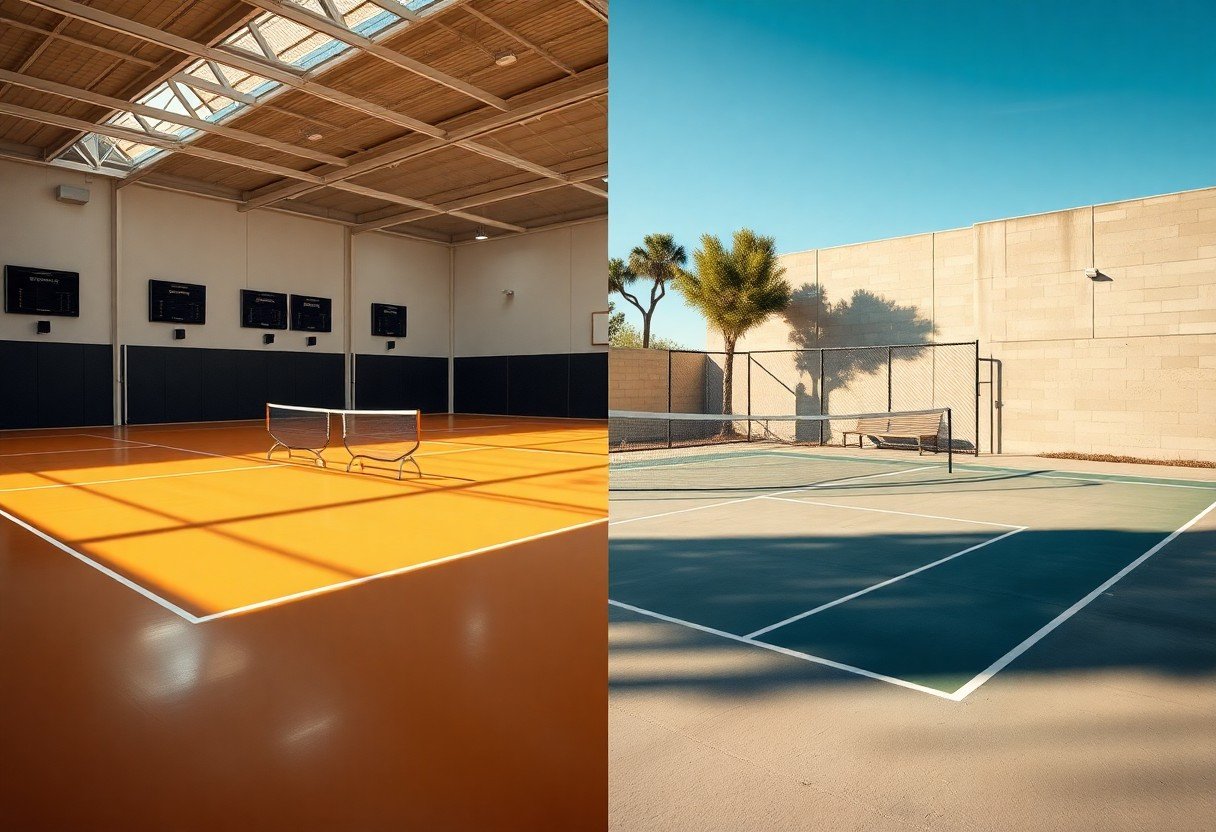
Gameplay Differences
Ball Behavior and Performance
The type of ball used in indoor and outdoor pickleball significantly affects gameplay. Indoor balls are typically lighter and designed for smoother surfaces, resulting in less bounce and more control. Conversely, outdoor balls are heavier, allowing them to withstand wind and outdoor conditions, leading to a more unpredictable trajectory. This difference can fundamentally alter your playing style, making precision shots more feasible indoors while requiring adaptability outdoors.
Player Mobility and Strategy
When you transition from indoor to outdoor play, you’ll notice variations in player mobility and strategic approaches. The outdoor environment often requires greater lateral movement due to wind and court conditions, compelling you to adjust your positioning and timing. Indoors, you might rely more on strategic shot placement and quick reflexes, while outdoor play emphasizes stamina and adaptability.
In outdoor settings, elements like wind can greatly impact your shot execution, which may require you to modify your strategies accordingly. For instance, using heavier topspin serves can help overcome windy conditions, while solid footwork becomes crucial to maintain balance and positioning. You’ll find that outdoor play often fosters a more robust physical contest as you maneuver through various court conditions.
Scoring and Game Dynamics
Scoring may remain consistent across both formats, but the dynamics can shift significantly depending on your environment. Indoor games can move quickly, with rallies often displaying a rapid pace due to controlled conditions, while outdoor play can involve extended rallies due to environmental challenges.
The increased influence of wind outdoors not only affects individual points but modifies overall game flow. You may find yourself adjusting your shot selection to account for conditions that can disrupt even the most accurate hits. This can lead to longer, more strategic matches where patience and precision dominate the gameplay, contrasting sharply with the fast-paced nature typical of indoor play.
Social Aspects
Community and Culture in Indoor Leagues
Indoor leagues often foster a tight-knit community where you can build strong friendships through regular play. Facilities typically host social events and leagues, which not only enhance competition but also promote camaraderie. With limited space and consistent attendance, players quickly bond over shared experiences, creating a welcoming atmosphere tailored for enthusiasts of all skill levels.
Community and Culture in Outdoor Tournaments
Outdoor tournaments tend to attract a wider range of participants, emphasizing both competition and social engagement. You’ll find that these events often promote a festive environment, complete with local vendors, music, and food. The gatherings provide an excellent opportunity to connect with players from different regions, enriching your pickleball experience and expanding your social network.
Moreover, outdoor tournaments celebrate local culture and foster a sense of community. Events often feature unique themes or local sponsors that contribute to a vibrant atmosphere, encouraging players and spectators alike to engage. The inclusion of family-friendly activities allows you to enjoy the day beyond competition, reinforcing bonds and creating lasting memories.
Accessibility and Participation Rates
Indoor pickleball leagues generally offer more consistent access, crucial for regular participation. Many facilities have flexible schedules and accommodate varying skill levels, making it easier for you to join. This predictable environment helps maintain high participation rates among local enthusiasts, contributing to the growth of the sport.
In contrast, outdoor pickleball often sees fluctuations in participation due to changing weather and seasonal conditions. While outdoor play attracts those who enjoy the sun and fresh air, it can also deter players during inclement weather. Therefore, while access to outdoor courts may be less consistent, many communities are creatively enhancing access through pop-up tournaments and community events, fostering a broader interest in participation.
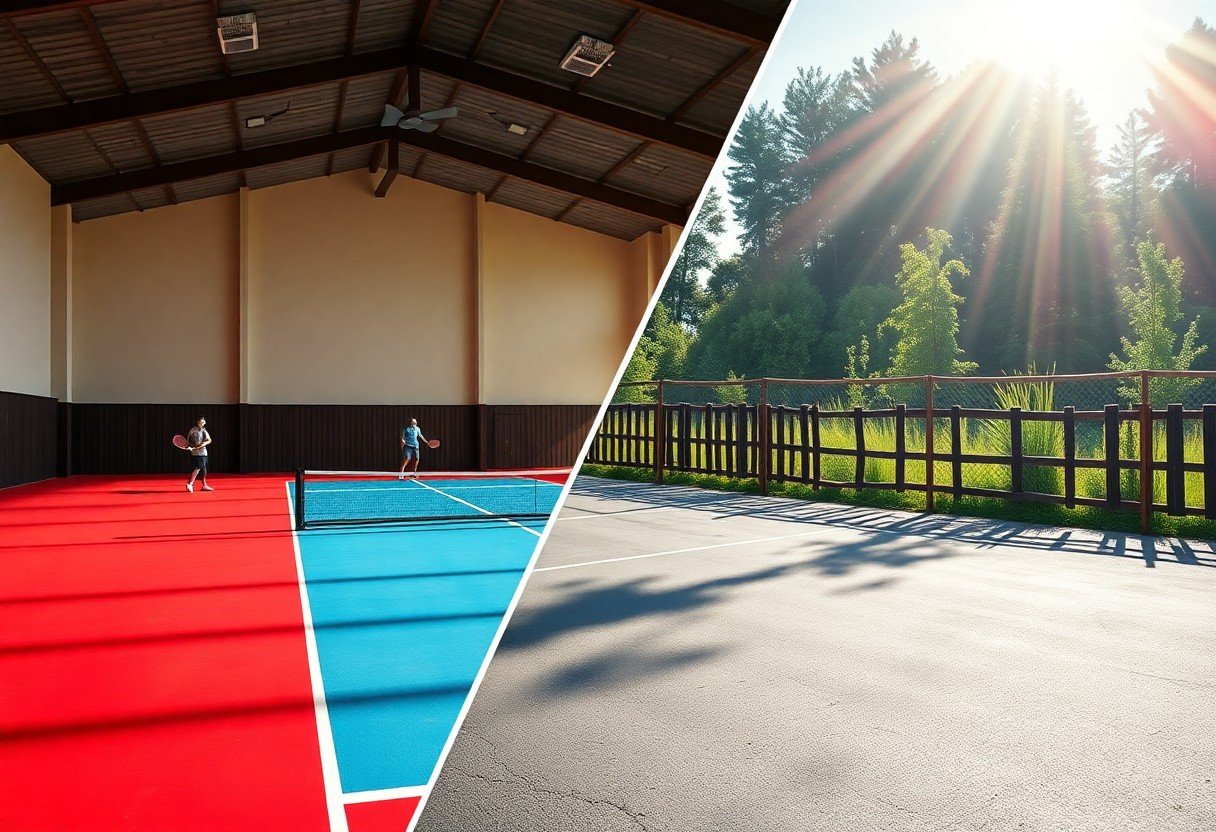
Recommendations for Players
Choosing the Right Environment
When deciding on between indoor and outdoor pickleball, consider your comfort and skill level. Indoor courts provide a controlled environment with consistent lighting and temperature, while outdoor courts present challenges like wind and sunlight. Choose based on your ability to adapt to these conditions and the availability of facilities in your area.
Preparing for Different Conditions
Adapting your gear and mindset is important when transitioning between indoor and outdoor play. For outdoor settings, light-colored clothing can help with heat and sun protection, while selecting the right shoes for specific court surfaces can enhance performance indoors. Keeping a versatile bag with both indoor and outdoor importants simplifies your game day preparation.
Tips for Transitioning Between Indoor and Outdoor Play
To transition smoothly, familiarize yourself with the differences in court surfaces and ball types. Adjust your footwork and shot selection based on how the ball reacts on each surface. Make sure you are equipped with a pair of shoes suitable for both environments and practice consistently in each setting to build adaptability. This approach will enhance your overall gameplay.
- Practice using both indoor and outdoor balls to feel their differences.
- Attend both types of games to increase your experience level.
- Regularly assess your equipment to ensure it suits each playing condition.
Developing a habit of understanding how different environmental factors impact your game will greatly improve your performance. This will help you become a more versatile player, able to excel regardless of where you play.
- Stay informed on multiple court conditions and their impact on play.
- Adjust your strategy based on whether you’re indoors or outdoors.
- Practice in both settings regularly to enhance your adaptability.
Mastering the art of transitioning requires consistent effort and a strategic mindset. This will enable you to effectively adapt to varying game conditions, ultimately elevating your overall pickleball skills.
Conclusion
Ultimately, understanding the key differences between indoor and outdoor pickleball can enhance your playing experience. Indoor courts provide a controlled environment with minimal weather interruptions, ensuring consistent gameplay. On the other hand, outdoor courts offer the challenge of variable conditions, which can improve your adaptability and strategy. By considering factors such as court surface, lighting, and surroundings, you can choose the setting that aligns best with your preferences and enhances your skills on the court.
FAQ
Q: What are the main differences in the surfaces of indoor vs outdoor pickleball courts?
A: Indoor courts typically have smooth surface materials like wood or polished concrete, which provide a softer bounce. Outdoor courts are often made of asphalt or textured concrete, which can lead to a higher and more varied bounce due to the rougher surface.
Q: How does weather affect outdoor pickleball play compared to indoor?
A: Outdoor pickleball is influenced by external weather conditions such as wind and rain, which can affect ball trajectory and playability. Indoor courts maintain a controlled environment, allowing for consistent playing conditions throughout the year.
Q: Are there differences in equipment used for indoor versus outdoor pickleball?
A: Yes, outdoor pickleball balls are generally designed to be more durable and are larger with bigger holes, helping them withstand wind and outdoor elements. Indoor balls are usually smaller and have fewer holes, which aids in better control on sleek surfaces.
Q: What are the typical lighting conditions for indoor and outdoor pickleball?
A: Indoor courts often have artificial lighting that can be adjusted for optimal visibility. Outdoor courts depend on natural light, which can vary throughout the day, potentially affecting visibility and gameplay during different times.
Q: How do player dynamics change between indoor and outdoor pickleball?
A: Indoor play tends to focus on quicker volleys and strategic placements due to consistent bounce and no wind interference. Outdoor play may require players to adapt to varying bounces and wind shifts, leading to different strategies and gameplay styles.


